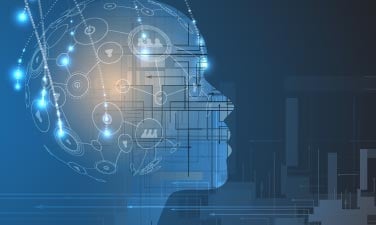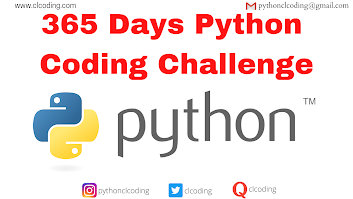The "Project: Computer Vision with Roboflow" course offered by Euron.one is a hands-on learning experience designed to help individuals build, train, and deploy computer vision models efficiently. By leveraging Roboflow, a powerful end-to-end computer vision platform, learners will gain practical expertise in working with datasets, performing data augmentation, training deep learning models, and deploying them in real-world applications.
Whether you're a beginner exploring the fundamentals of computer vision or an advanced practitioner looking to streamline your workflow, this course provides a structured, project-based approach to mastering modern AI techniques.
What is Roboflow?
Roboflow is an industry-leading platform that simplifies the entire lifecycle of computer vision projects. It provides tools for:
Dataset Collection & Annotation – Easily label and manage images.
Data Augmentation & Preprocessing – Enhance datasets with transformations for improved model generalization.
Model Training & Optimization – Train models using state-of-the-art architectures.
Deployment & Integration – Deploy models via APIs, edge devices, or cloud-based solutions.
Roboflow's intuitive interface, automation features, and extensive dataset repository make it an invaluable tool for both beginners and professionals working on AI-driven image and video processing applications.
Course Breakdown
The "Project: Computer Vision with Roboflow" course is structured into multiple modules, each covering key aspects of building and deploying computer vision solutions.
Module 1: Introduction to Computer Vision and Roboflow
- Understanding the fundamentals of computer vision.
- Overview of real-world applications (e.g., facial recognition, object detection, medical imaging, autonomous driving).
- Introduction to Roboflow and how it simplifies the workflow.
Module 2: Dataset Collection and Annotation
- How to collect images for training a computer vision model.
- Using Roboflow Annotate to label objects in images.
- Best practices for data annotation to ensure accuracy.
- Exploring pre-existing datasets in Roboflow’s public repository.
Module 3: Data Augmentation and Preprocessing
- What is data augmentation, and why is it important?
- Applying transformations (rotation, flipping, brightness adjustments, noise addition).
- Improving model performance through automated preprocessing.
- Handling unbalanced datasets and improving training efficiency.
Module 4: Model Selection and Training
- Understanding different deep learning architectures for computer vision.
- Training models using TensorFlow, PyTorch, and YOLO (You Only Look Once).
- Using Roboflow Train to automate model training.
- Fine-tuning hyperparameters for improved accuracy.
Module 5: Model Evaluation and Performance Optimization
- Understanding key performance metrics: Precision, Recall, F1-score.
- Using confusion matrices and loss functions for model assessment.
- Addressing common problems like overfitting and underfitting.
- Hyperparameter tuning techniques to enhance accuracy.
Module 6: Model Deployment and Integration
- Deploying models using Roboflow Inference API.
- Exporting trained models to Edge devices (Raspberry Pi, Jetson Nano, mobile devices).
- Deploying models in cloud-based environments (AWS, Google Cloud, Azure).
- Integrating computer vision models into real-world applications (e.g., security surveillance, industrial automation).
Module 7: Real-world Applications and Case Studies
- Implementing face recognition for security systems.
- Using object detection for retail checkout automation.
- Enhancing medical diagnostics with AI-driven image analysis.
- Applying computer vision in self-driving car technology.
Why Take This Course?
Hands-on Learning Experience
This course follows a project-based approach, allowing learners to apply concepts in real-world scenarios rather than just theoretical learning.
Comprehensive AI Training Pipeline
From dataset collection to deployment, this course covers the entire computer vision workflow.
Industry-Ready Skills
By the end of the course, learners will have a working knowledge of Roboflow, TensorFlow, PyTorch, OpenCV, and other essential AI frameworks.
Career Advancement
Computer vision is one of the most in-demand AI fields today, with applications across healthcare, retail, robotics, security, and automation. Completing this course will boost your career prospects significantly.
What you will learn
- Understand the fundamentals of computer vision and its applications.
- Use Roboflow to annotate, augment, and version datasets efficiently.
- Train computer vision models for tasks like object detection and classification.
- Deploy trained models into real-world applications.
- Evaluate model performance using key metrics and techniques.
- Optimize models for speed and accuracy in production.
- Work with pre-trained models and customize them for specific tasks.
- Gain hands-on experience with end-to-end computer vision workflows using Roboflow.
Join Free : Project : Computer Vision with Roboflow
Conclusion
The "Project: Computer Vision with Roboflow" course by Euron.one is an excellent opportunity to develop expertise in one of the fastest-growing fields of artificial intelligence. Whether you aim to build AI-powered applications, enhance your data science skills, or advance your career in computer vision, this course provides the tools and knowledge needed to succeed.















%20(3).png)














.png)











%20(3).png)








0 Comments:
Post a Comment